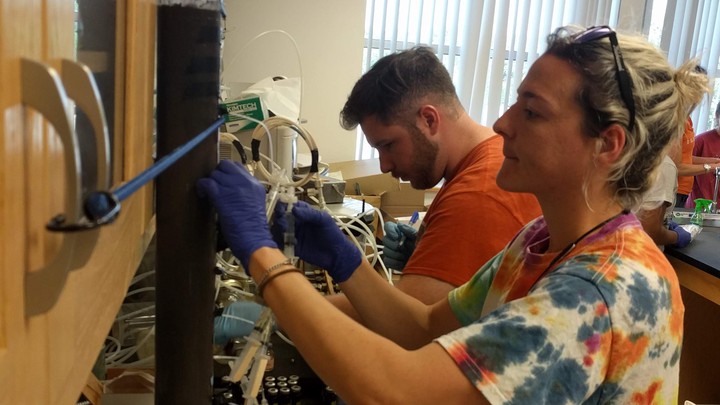Most of the molecules that organisms synthesize are polymeric, and so most of the bioavailable organic matter in the environment consists of high-molecular weight molecules. In order to access these molecules, heterotrophic microbes must first break them down into smaller units (although there are some intersting, newly-discovered exceptions to this rule.) Thus, the ability of microbial communities to express extracellular enzymes, and the dynamics of those enzymes once produced, serve as a proximate control on the remineralization of organic matter, and thus the Earth’s carbon cycle. We study the nature, dynamics, and controls on microbial extracellular enzymes in aquatic environments.

Drew Steen
Assistant Professor of Microbiology and Earth and Planetary Sciences
We in the Steen Lab want to understand how microbes interact with organic matter in aquatic systems. To do that, I use the tools of organic geochemistry as well as microbial ecology. These questions have lead us to work on new approaches to analyze DNA sequences from environmental microbiomes and to study the distribution of taxa and functions across all of microbial life.